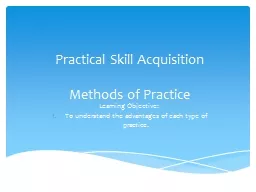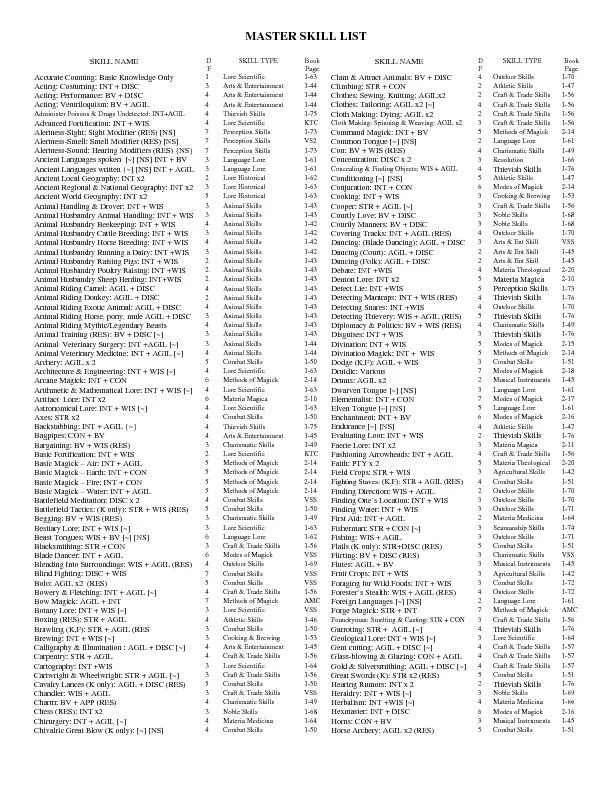PPT-Practical Skill Acquisition
Author : karlyn-bohler | Published Date : 2016-05-28
Methods of Practice Learning Objective To understand the advantages of each type of practice With a partner list as many advantages and disadvantages you can think
Presentation Embed Code
Download Presentation
Download Presentation The PPT/PDF document "Practical Skill Acquisition" is the property of its rightful owner. Permission is granted to download and print the materials on this website for personal, non-commercial use only, and to display it on your personal computer provided you do not modify the materials and that you retain all copyright notices contained in the materials. By downloading content from our website, you accept the terms of this agreement.
Practical Skill Acquisition: Transcript
Download Rules Of Document
"Practical Skill Acquisition"The content belongs to its owner. You may download and print it for personal use, without modification, and keep all copyright notices. By downloading, you agree to these terms.
Related Documents







![[] Acquisition Team](https://thumbs.docslides.com/468971/acquisition-team.jpg)






